The main idea of this project was to make a customizable clock, a clock that would have the option to change its appearance very easily, The first option was to make it with RGB LEDs and change the color at will, maybe to have the ability to change the color according to the time of the day or with the ambient temperature, but what is more customizable than a display by itself, nowadays we can find very nice IPS Displays that are very cheap.
Maybe the hardest step of this project was the clock creation, making the graphics for each clock was really challenging as I wanted to look very similar to the real ones, like the Flip Clock, the seven-segment Display clock, the LED matrix clock.
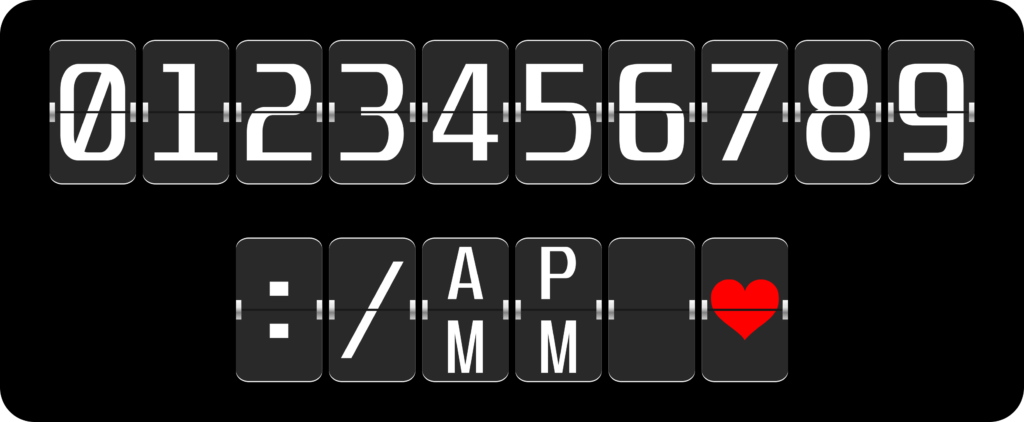
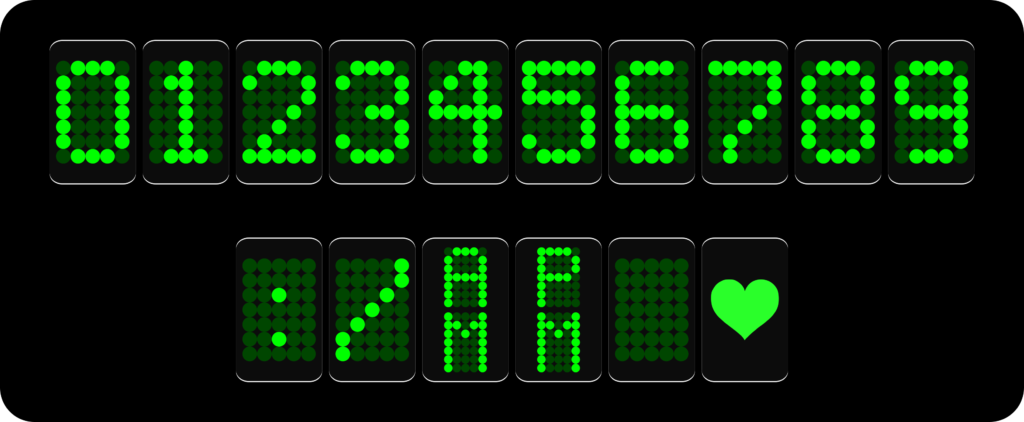
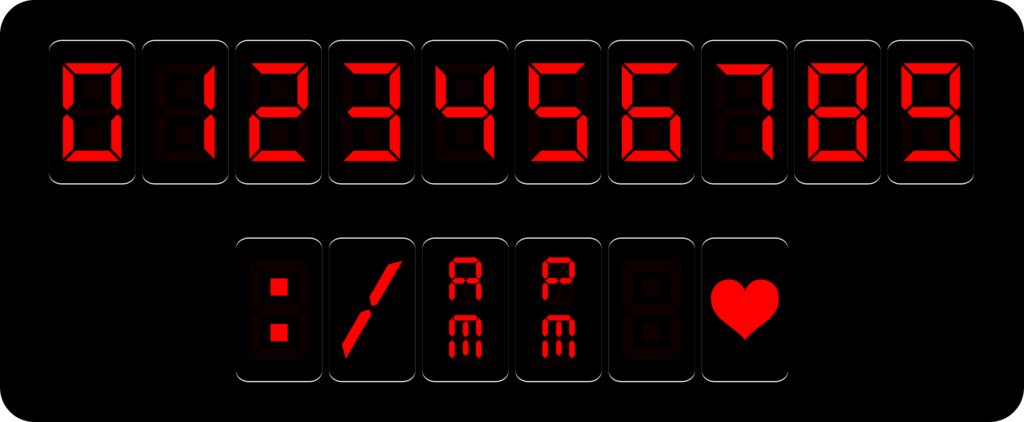
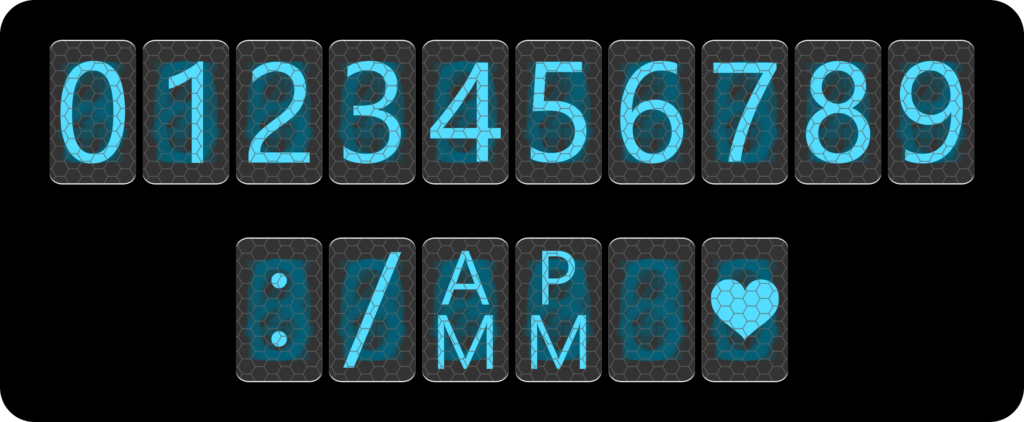
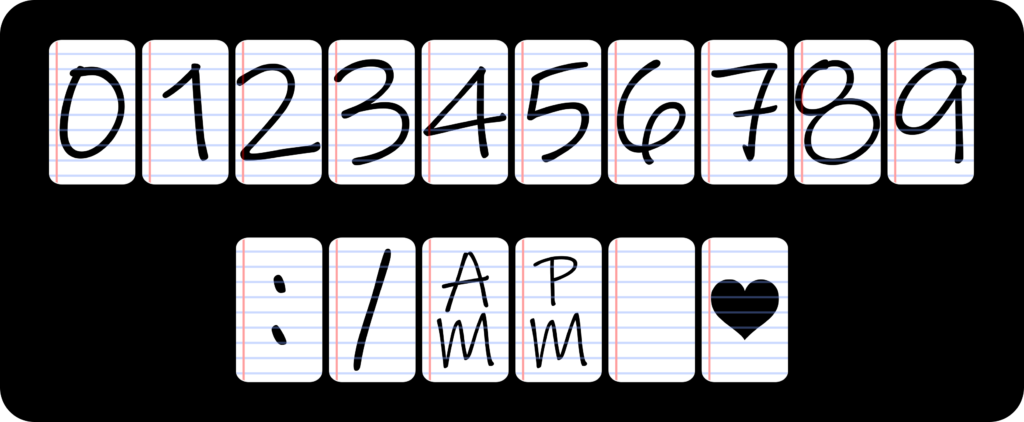
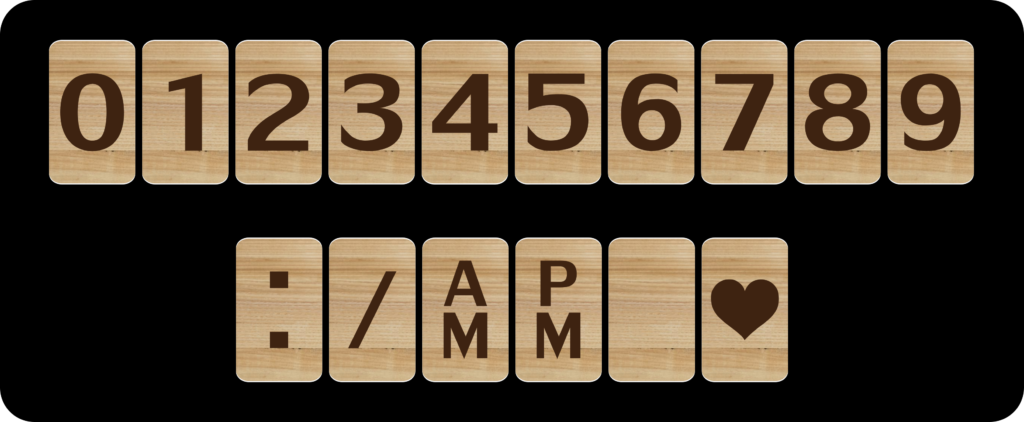
These are only a few clocks that I have created, but it will be awesome to see other designs and that is why I’m sharing the design files of this project, I think it would be awesome to see how a project can evolve in the maker community.
I have also designed a 3D printed enclosure or in this case a frame. It consists of only 3 parts that glued together to make a single clock piece.
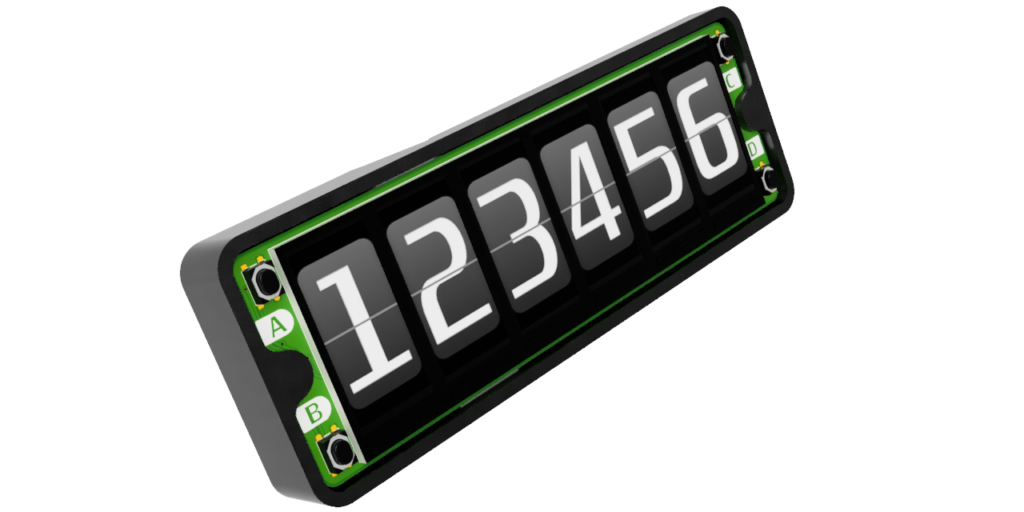
The PCB is intended to be compatible with any Microcontroller or SBC like the Raspberry as it only needs some GPIOs and an SPI Port. This makes the PCB compatible with a simple microcontroller as an Arduino to other more advanced microcontrollers. We could say this board is a breakout board for the arrangement of six displays and 4 buttons.
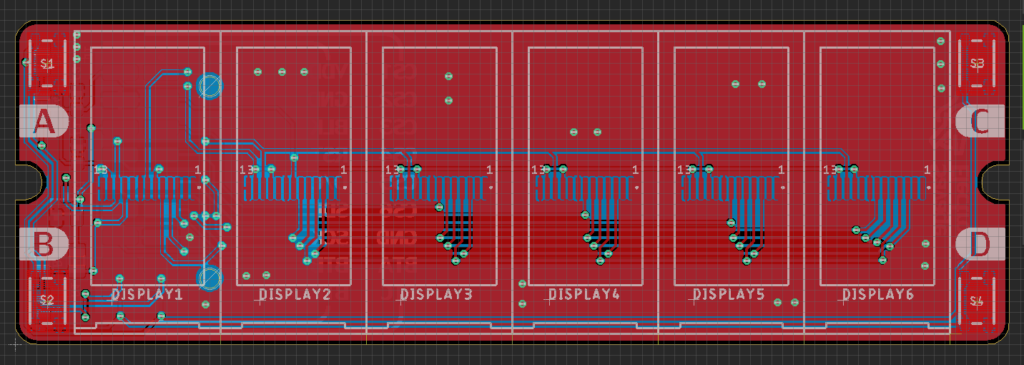
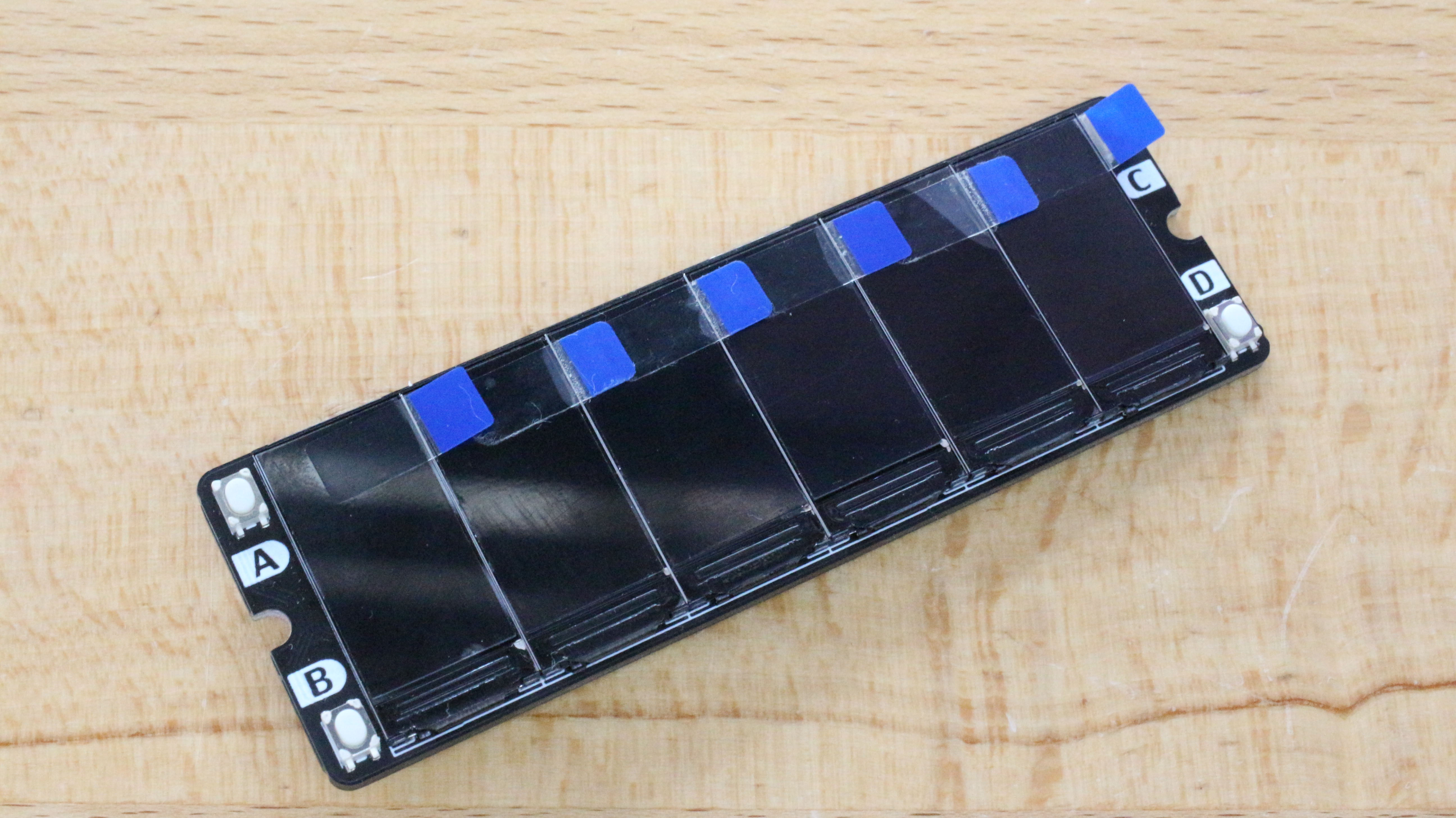
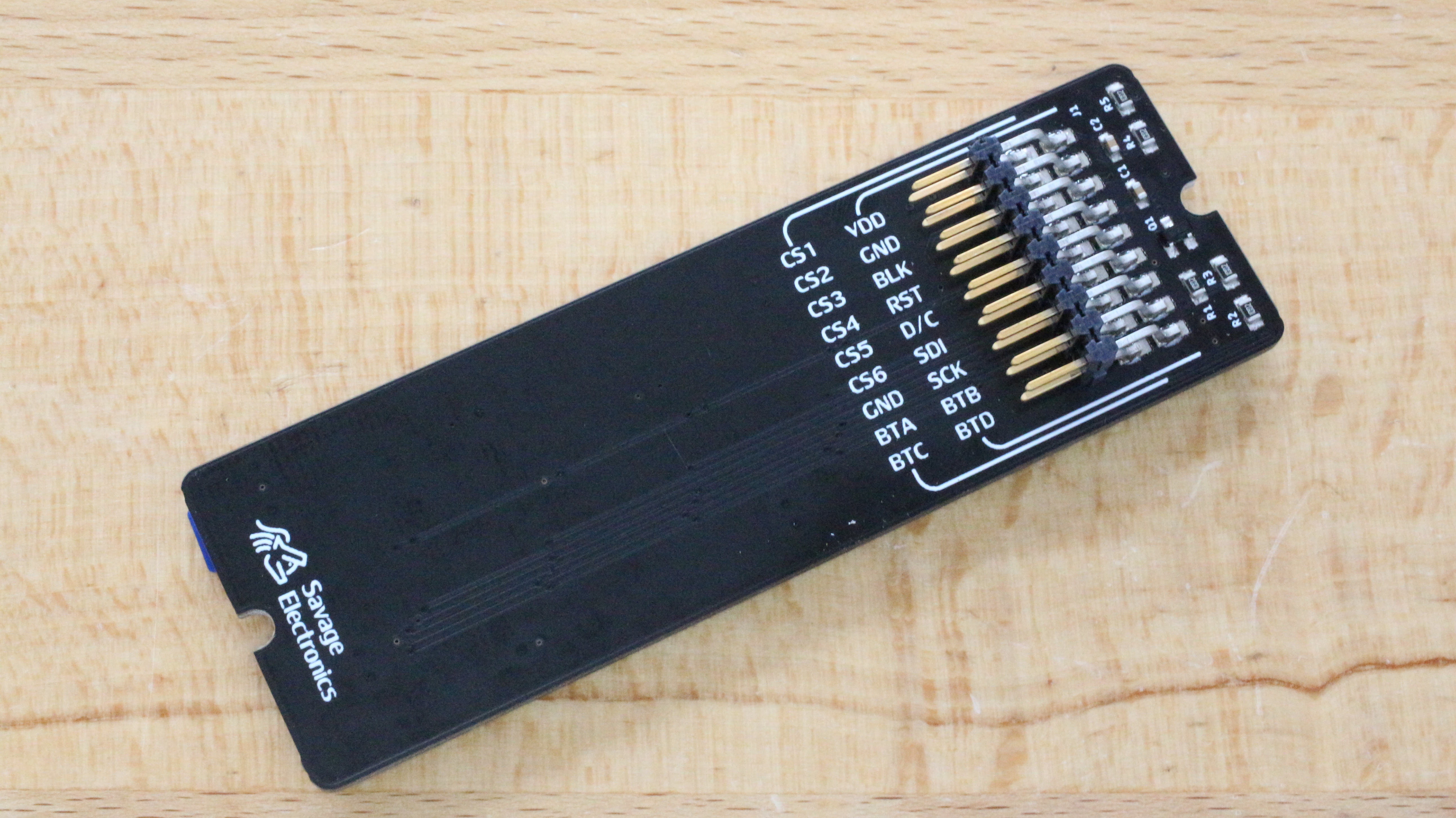
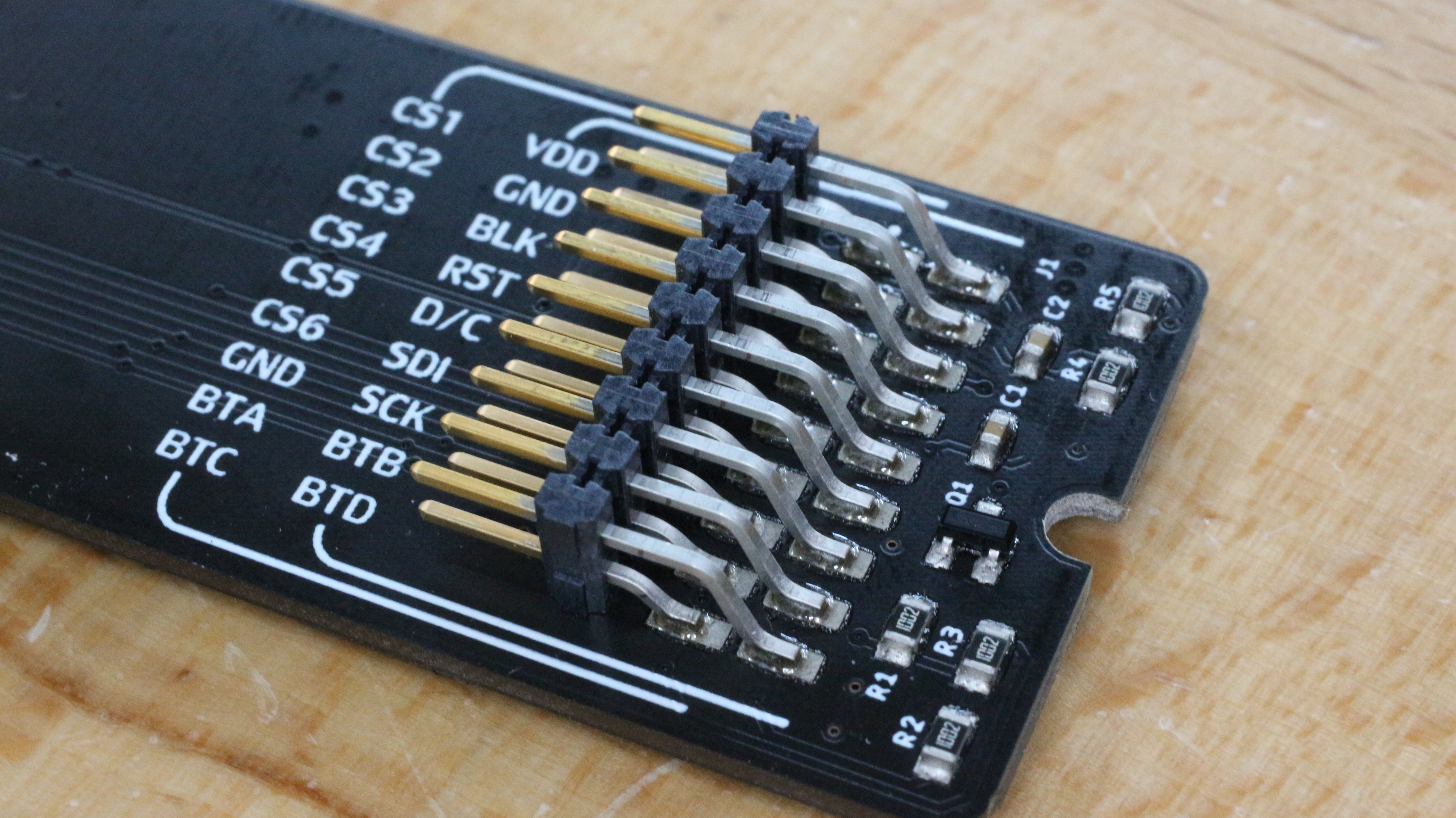
Testing the clock designs
Before writing the clock firmware I decided to test all the designs that I have already created on the computer, so using the Raspberry Pi Pico I have written a simple program that allows me to set an image for each display in order to simulate how the clock would look like.

LED Matrix Clock 
Digital Clock 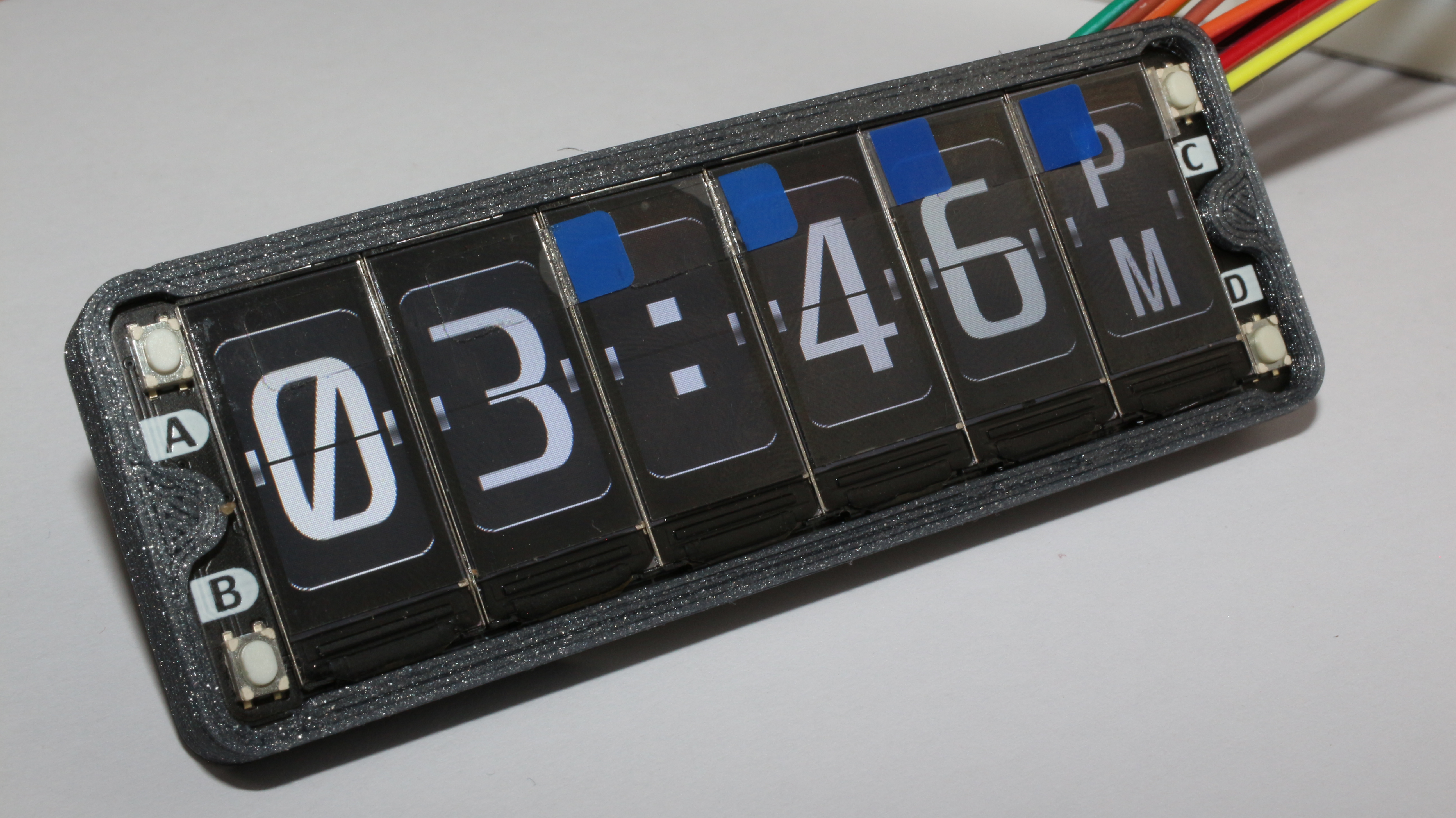
Flip Clock 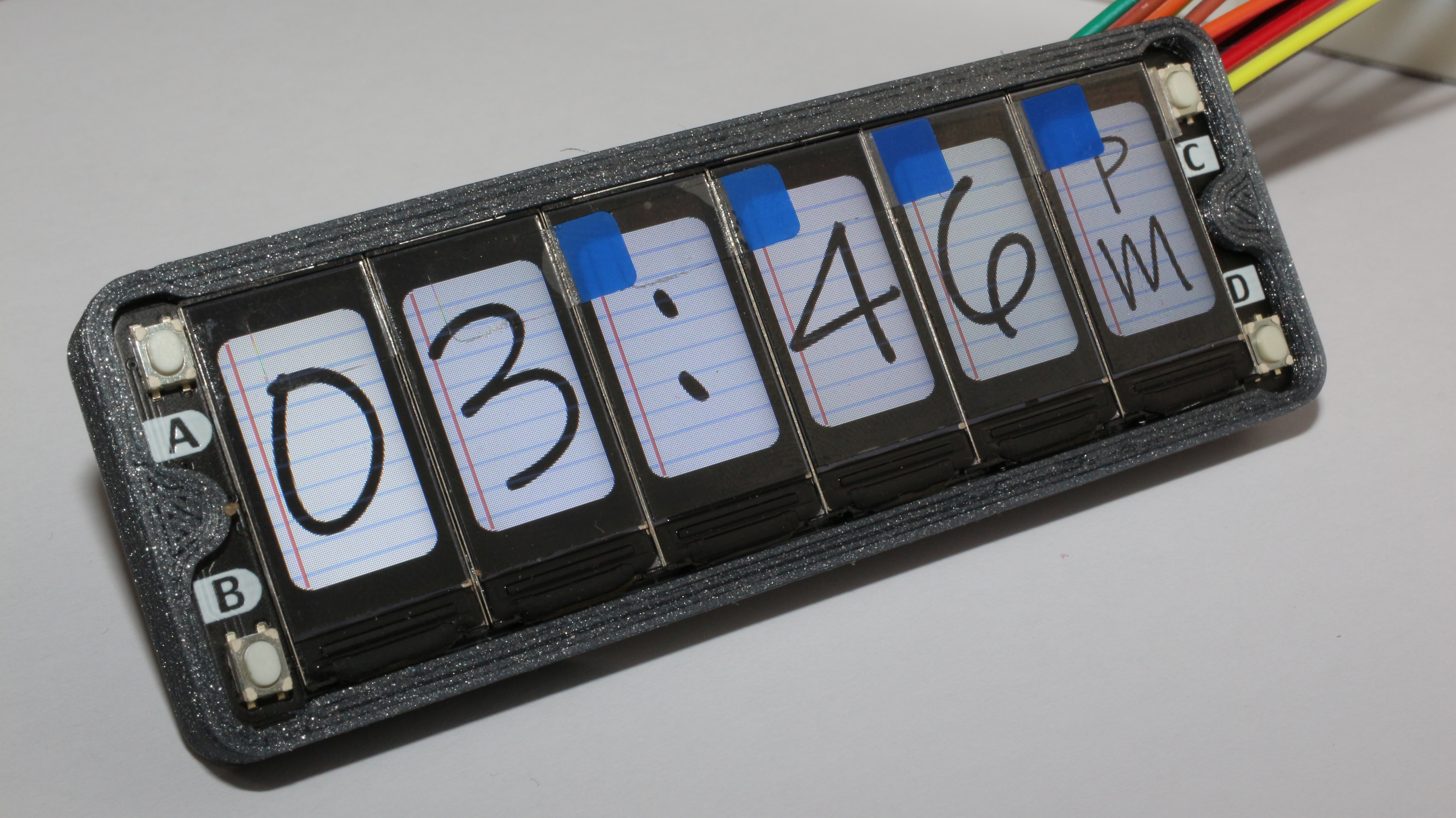
Ink Clock 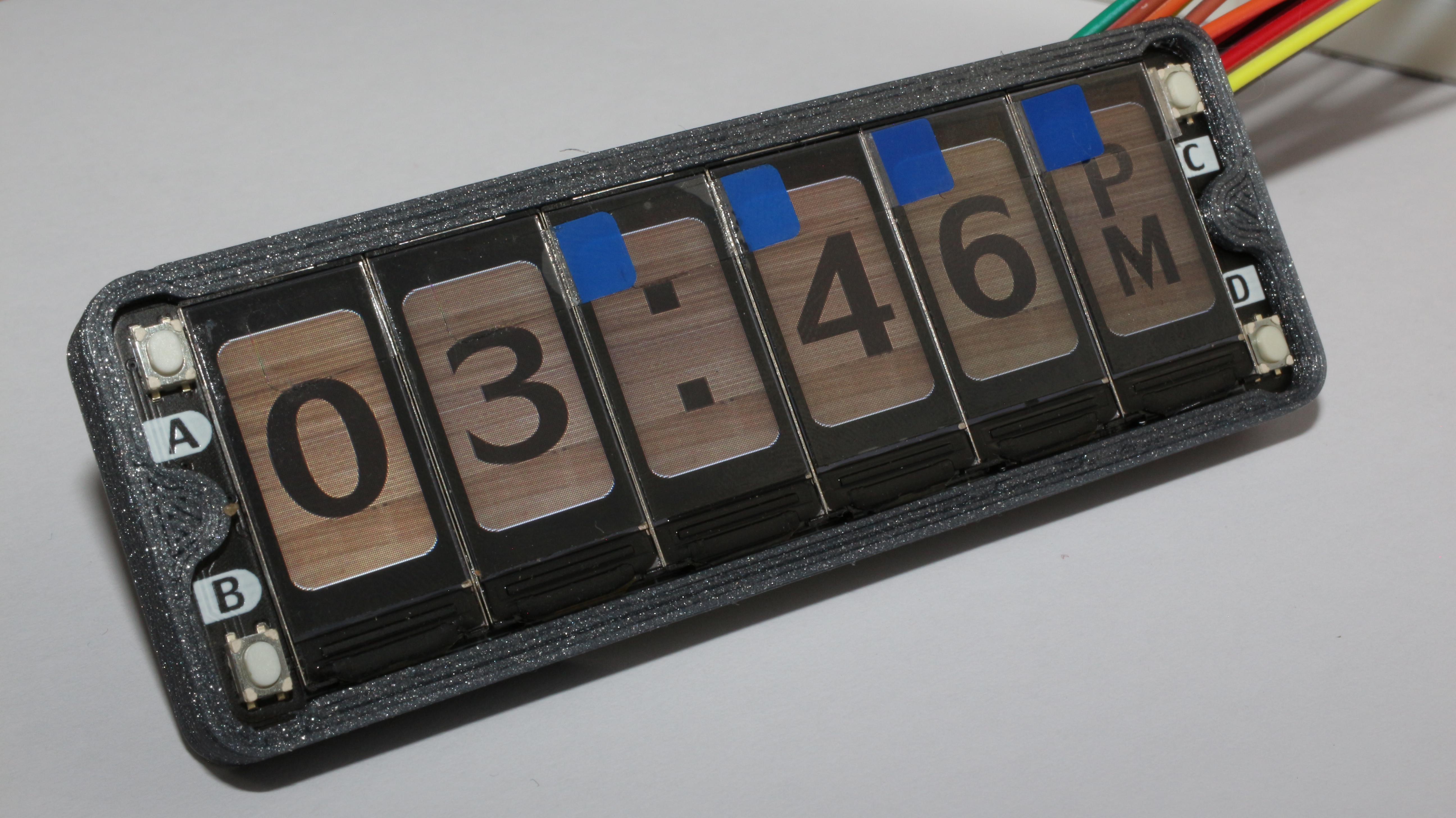
Wood Clock 
VFD Clock 
Desing Test
The code for this simple task consists of the initialization of the displays and just sensing the raw data of each image to the corresponding display.
#include "pico/stdlib.h"
#include "hardware/gpio.h"
#include "hardware/pio.h"
#include "ST7735.h"
#include "clockDigital.h"
#include "clockFlip.h"
#include "clockMatrix.h"
#include "clockVFD.h"
#include "clockInk.h"
#include "clockWood.h"
#define ONBOARD_LED 25
int main(){
stdio_init_all();
PIO pio = pio0;
uint sm = 0;
uint offset = pio_add_program(pio, &SPILCD_program);
lcdPIOInit(pio, sm, offset, PIN_SDI, PIN_SCK, SERIAL_CLK_DIV);
gpio_init(ONBOARD_LED);
gpio_set_dir(ONBOARD_LED, GPIO_OUT);
gpio_init(PIN_CS1);
gpio_init(PIN_CS2);
gpio_init(PIN_CS3);
gpio_init(PIN_CS4);
gpio_init(PIN_CS5);
gpio_init(PIN_CS6);
gpio_init(PIN_DC);
gpio_init(PIN_RST);
gpio_init(PIN_BLK);
gpio_set_dir(PIN_CS1, GPIO_OUT);
gpio_set_dir(PIN_CS2, GPIO_OUT);
gpio_set_dir(PIN_CS3, GPIO_OUT);
gpio_set_dir(PIN_CS4, GPIO_OUT);
gpio_set_dir(PIN_CS5, GPIO_OUT);
gpio_set_dir(PIN_CS6, GPIO_OUT);
gpio_set_dir(PIN_DC, GPIO_OUT);
gpio_set_dir(PIN_RST, GPIO_OUT);
gpio_set_dir(PIN_BLK, GPIO_OUT);
gpio_put(ONBOARD_LED, 1);
gpio_put(PIN_CS1, 0);
gpio_put(PIN_CS2, 0);
gpio_put(PIN_CS3, 0);
gpio_put(PIN_CS4, 0);
gpio_put(PIN_CS5, 0);
gpio_put(PIN_CS6, 0);
gpio_put(PIN_RST, 1);
lcdInit(pio, sm, st7735_initSeq);
gpio_put(PIN_BLK, 1);
lcdStartPx(pio,sm);
for (int i = 0; i < 160*80*2; i++){
lcdPut(pio, sm, one_Flip[i]);
}
gpio_put(PIN_CS1, 1);
for (int i = 0; i < 160*80*2; i++){
lcdPut(pio, sm, two_Matrix[i]);
}
gpio_put(PIN_CS2, 1);
for (int i = 0; i < 160*80*2; i++){
lcdPut(pio, sm, three_Digital[i]);
}
gpio_put(PIN_CS3, 1);
for (int i = 0; i < 160*80*2; i++){
lcdPut(pio, sm, four_VFD[i]);
}
gpio_put(PIN_CS4, 1);
for (int i = 0; i < 160*80*2; i++){
lcdPut(pio, sm, five_Ink[i]);
}
gpio_put(PIN_CS5, 1);
for (int i = 0; i < 160*80*2; i++){
lcdPut(pio, sm, six_Wood[i]);
}
}For the SPI Display Array clock Firmware go to the Part2 of this project.
Visit my Tindie Store for the assembled board.




Looks super-cool! Great idea!
Hello,
how big is this case?
Kindely regards,
Matthias
The dimensions of the case are 96mm long by 33 deep by 29 mm tall, I am also about to release a resin 3D printed case that it’s smaller, please visit my GitHub page or stay tune at my Twitter.
Hello-
I’d like to modify your display array for a project I’m building.
Would it be possible to get the library file for the displays? I’m interested in modifying the part itself (to sit on the board flat rather than folded under), but without the library, I’d need to generate the whole pcb footprint.
Thanks,
david
Sure, are you using eagle or Kicad? I can provide the desired footprint for both CADs.